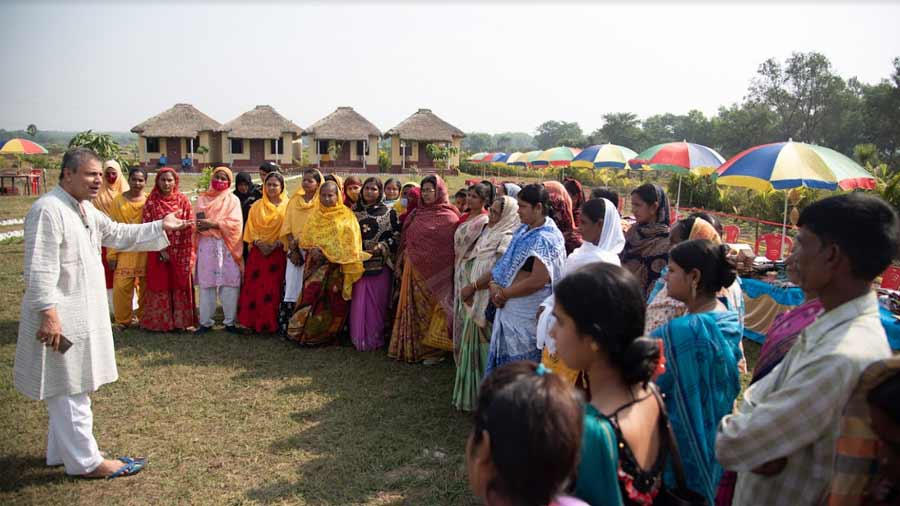Among the many art styles of Assam is puthichitro, or manuscript painting. In a puthichitro, illustrations of various mythical and historical stories accompany the text. Many manuscripts from medieval times have outstanding examples of manuscript painting.
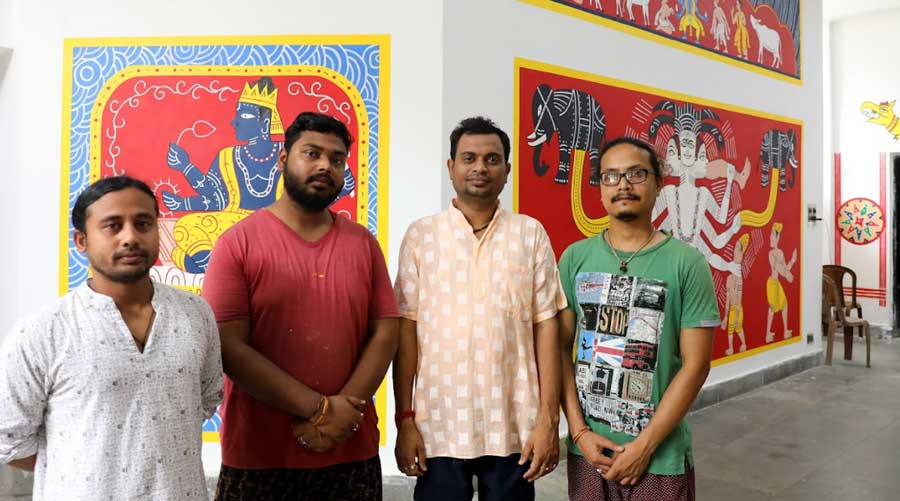
(L-R) Artists Rajib Kakoti, Kishore Kumar Mondal, Sujit Das and Manoj Kumar Saikia at Kolkata’s Aikatan Cultural Complex All images by Arijit Sen
Sujit Das, a noted artist from Assam, has been working to revive and popularise this traditional art form. At a recent workshop on puthichitro, organised at Kolkata’s Aikatan Cultural Complex by the Eastern Zonal Cultural Centre (EZCC) and the Ministry of Culture, Das and a team of artists provided insight into the art. Along with five other artists — Manoj Kumar Saikia, Kishore Kumar Mondal, Rajib Kakoti, Sourav Bora and Bhaskar Hazarika — he painted the walls of the entrance to the conference room with replicas of puthichitro.
My Kolkata spoke to Das about this style of art and his association with it.
Puthichitro is one of the rarest artforms of Assam, one that was almost lost. “We are working to revive and popularise this art form and have been to 25 countries to talk about it,” said Das, who has an art village in Nagaon (Assam), which preserves and propagates Assam’s heritage paintings and art forms. Very few people work on this miniature form of painting, he added.
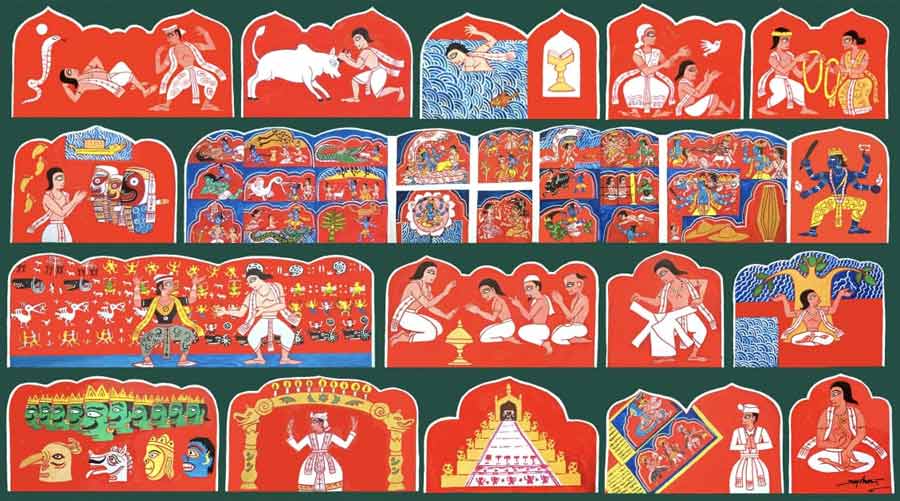
Illustrations of the book ‘Life of Sankaradeva’ done by Sujit Das
The art and its beginnings
Puthichitro can be traced back to the works of the 15th-century polymath, saint-scholar, social reformer and artist Srimanta Sankardev, a prominent figure in the cultural and religious history of Assam. It was traditionally drawn on sanchipaat, which is the bark of the sanchi tree, or on tulapaat, which is a canvas made by mixing cotton, cow dung and other organic material.
Traditionally, the colours for the paintings were all derived from natural sources. While some natural sources remain, such as neel (indigo) for blue, dholmaati or khorimaati (sandalwood) for white, other natural sources such as the red hengul and yellow hiatal that once came from plants, now come from mineral colours that are ground with stone.
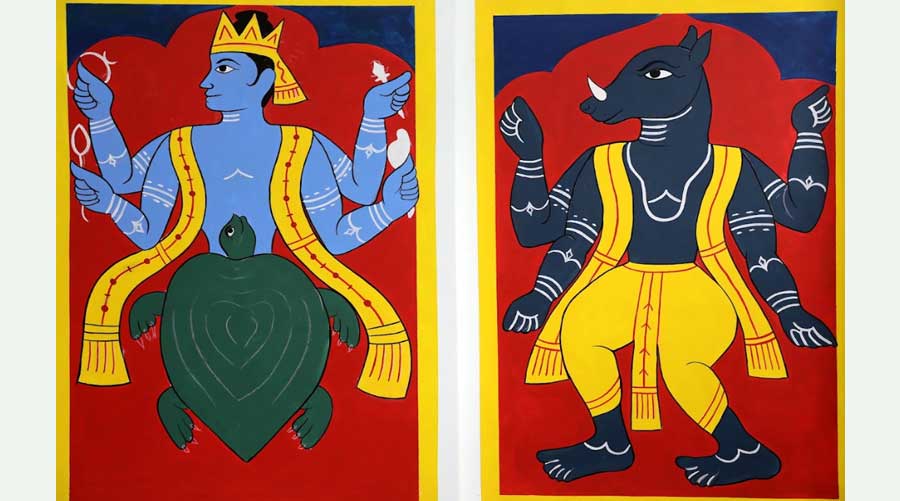
The Kshatriya style paintings of ‘puthichitro’ prominently feature the Dashavatara of Vishnu
Among the first forms of the art is the Kshatriya style of painting, where primary subjects and motifs were derived from mythology such as the Dashavatars, and stories of Krishna and Ram. Next came the darbari or royal style, which was influenced by Mughal and Rajput art.
The third iteration of puthichitro is a folk art style that has elements from folk and tribal culture. Lastly, is the fourth style, known as Tai Aahum, where influences of the art of Myanmar and Britain is evident. Buddhist influences play a pivotal role in this style of puthichitro.
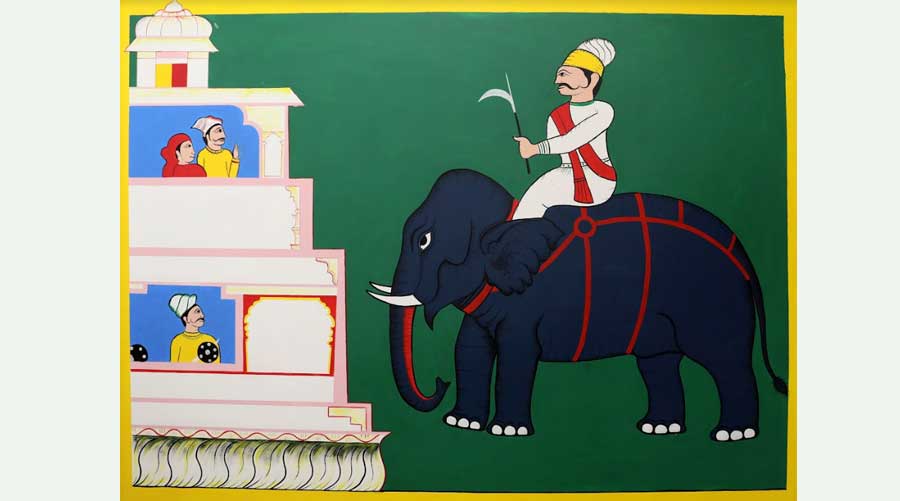
The ‘darbari’ or royal style paintings of ‘puthichitro’ were influenced by Mughal and Rajput art
Assam has about 150 illustrated manuscripts, among which are two restored manuscripts on muga textiles. Some of these have more than 150 or 200 paintings, such as the Haribangsha Puran, Kumor Haran, Kalki Puran.
The artist and his work
Das, a resident of Nagaon in Assam, received a fellowship from The Centre for Cultural Resources and Training (CCRT), Ministry Of Culture, Government of India, for his outstanding work. He painted a miniature model of Assam, which was also appreciated by the Dalai Lama.
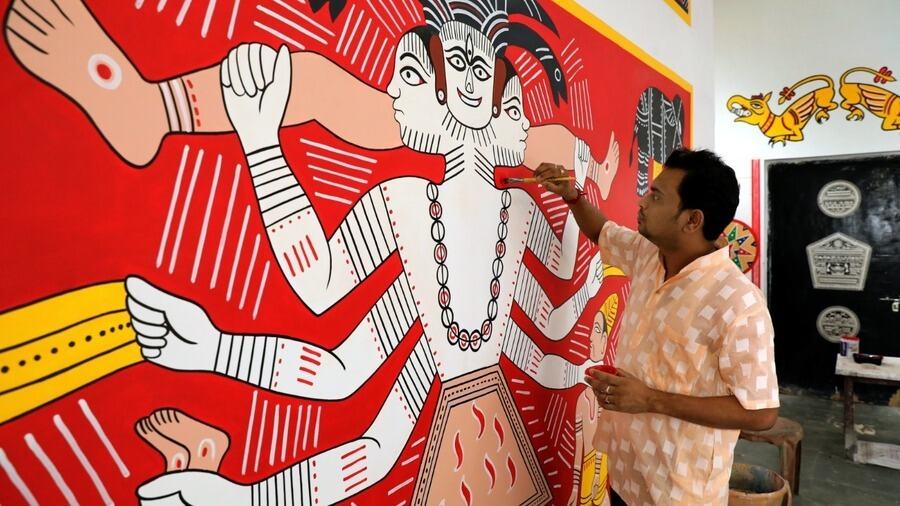
Sujit Das has travelled across Assam looking for ‘puthichitro’ manuscripts
He has also received a letter of appreciation from Prince William and Kate Middleton for his contribution to the preservation of Kshatriya painting. He has also illustrated a book, Life of Sankaradeva, in the form of a chart made by combining different illustrations. Apart from painting, Das is also a talented craftsman and makes hand-painted manuscript boxes.
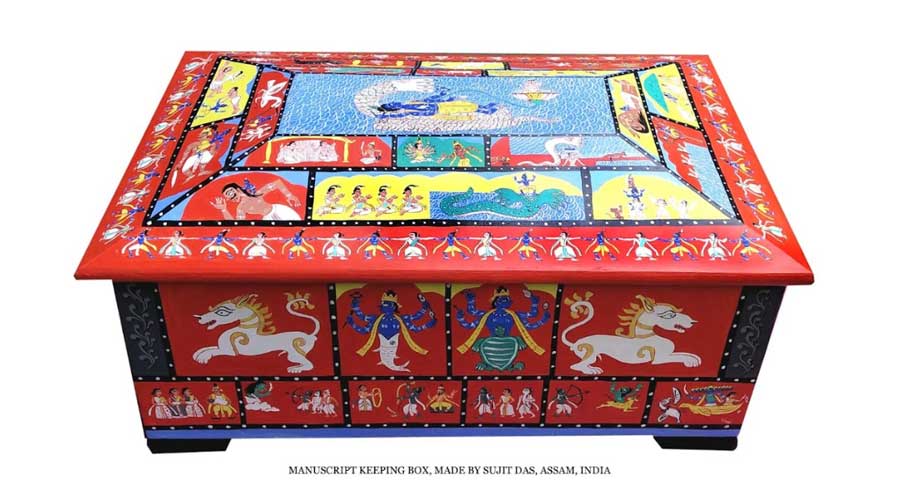
Manuscript box made by Sujit Das Courtesy Sujit Das
Das has travelled to the corners of Assam in search of manuscripts featuring this dwindling artform. The Kolkata workshop is another step in the direction of reviving and raising awareness about it. “Here, in Aikatan, we are not using the natural colours and have made paintings that reflect this style of art,” he said, The idea behind the endeavour was to spread awareness about the art.

The entrance of the conference room of Aikatan, painted with ‘puthichitros’
“Kolkata is one of the most culturally rich cities. Hence, having a workshop here has been a blessing. We hope to reach more people and make them aware about this art,” said Das.
